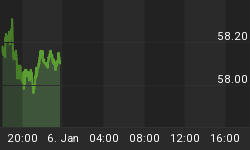The LBMA published its annual forecast survey for precious metals prices in 2019. Gold prices range from $1,150 to $1,475. Who is right?
Gold Prices Will Modestly Increase
As one year ago, the views of 30 precious market analysts in this year’s forecasts are strongly divergent. The average price of gold is projected to be $1,311.71, so it is expected to be around the current level (when we write this Gold News Monitor, the price of gold amounts to $1,320.70). It implies a modest increase of 1.8 percent compared to the average price in the first half of January 2019 (when the forecasts have been done), and higher jump of 3.4 percent from the average price in 2018. However, the projected trading range for gold is between $1,150 and $1,475, or $325. So, prepare yourself for a really interesting year for the gold market!
There are wide spreads across other precious metals as well. In particular, the average price of palladium is forecasted to be $1,267.68. It implies a fall of 1.5 percent, but the figure is overshadowed by an $815 trading range (from $900 to 1,715). The spread suggests that 2019 might be turbulent for palladium. The analysts are more bullish on silver, forecasting a 4.2 percent increase in its average price to $16.28. However, it is platinum which is expected to be the best performing four metals. The experts project its average price to increase 5.1 percent to $850.71.
Bullish Case for Gold
The analysts formulated many arguments justifying their views, both bullish and bearish. Let’s list the most commonly presented, starting from the former group:
• Fed’s more dovish stance of monetary policy,
• Lower Treasury yields;
• Weaker US dollar;
• Stock market volatility;
• The US economic cycle matures, pushing investors into safe-haven assets.
In short, more dovish US monetary policy, combining with maturing economic cycles and rising inflation and the risk of recession, should strengthen gold.
Bearish Case for Gold
Now, let’s turn to the bearish points:
• Strong U.S. economy;
• The Fed’s more dovish stance will be short-lived;
• The end of trade wars between China and the U.S. will erases uncertainty and revive investment in risky assets;
• Subdued inflation and positive real interest rates.
The bearish case can be summarized as follows: the U.S. economy will continue its expansion and the Fed will resume its tightening in the second half of the year. As inflation will remain curbed, the real interest rates will increase. All the current downside risks, such as trade wars or Brexit, will recede.
Our Take on Gold Prices in 2019
We have just presented to you some bullish and bearish arguments made by several top experts. Which convince you more? When it comes to us, we believe that gold bulls have a stronger hand now. As we explained in the January edition of the Market Overview, a scaling back of Fed rate hike expectations should translate into weaker greenback and lower interest rates. Related: Amazon Slips After Underwhelming Earnings Report
Please keep in mind that these macro factors are key drivers for the gold market and they were headwinds in 2018. But this year, they are likely to ease. In particular, a strong U.S. dollar prevented rally in gold prices, despite an otherwise positive macroeconomic environment. But the greenback might be peaking and running out of steam. Moreover, the ECB could start normalization of its monetary policy in the second half of 2019, or this is at least what investors could start to anticipate and price in. Such expectations should also push the dollar lower while strengthening the gold prices.
To be clear, we are bullish at the margin. It means that we do believe that the fundamental outlook for gold is better this year than in 2018. Actually, the LBMA’s forecasters might underestimate the gold’s upward potential. But it does not necessarily imply that we will see a sustained gold bull market. We rather expect assets rebalancing toward gold. You see, for the yellow metal to truly break out higher, we would need a serious economic slowdown in the U.S., or even downturn, and the FOMC would have to begin cut interest rates again.
Anyway, the recent gold price strength is encouraging (but investors should remember that January is consistently one of the best months for the yellow metal), and we remain fundamentally bullish. If our outlook changes, we will inform you immediately.
By Arkadiusz Sieron via Sunshine Profits
More Top Reads From Safehaven.com:

















